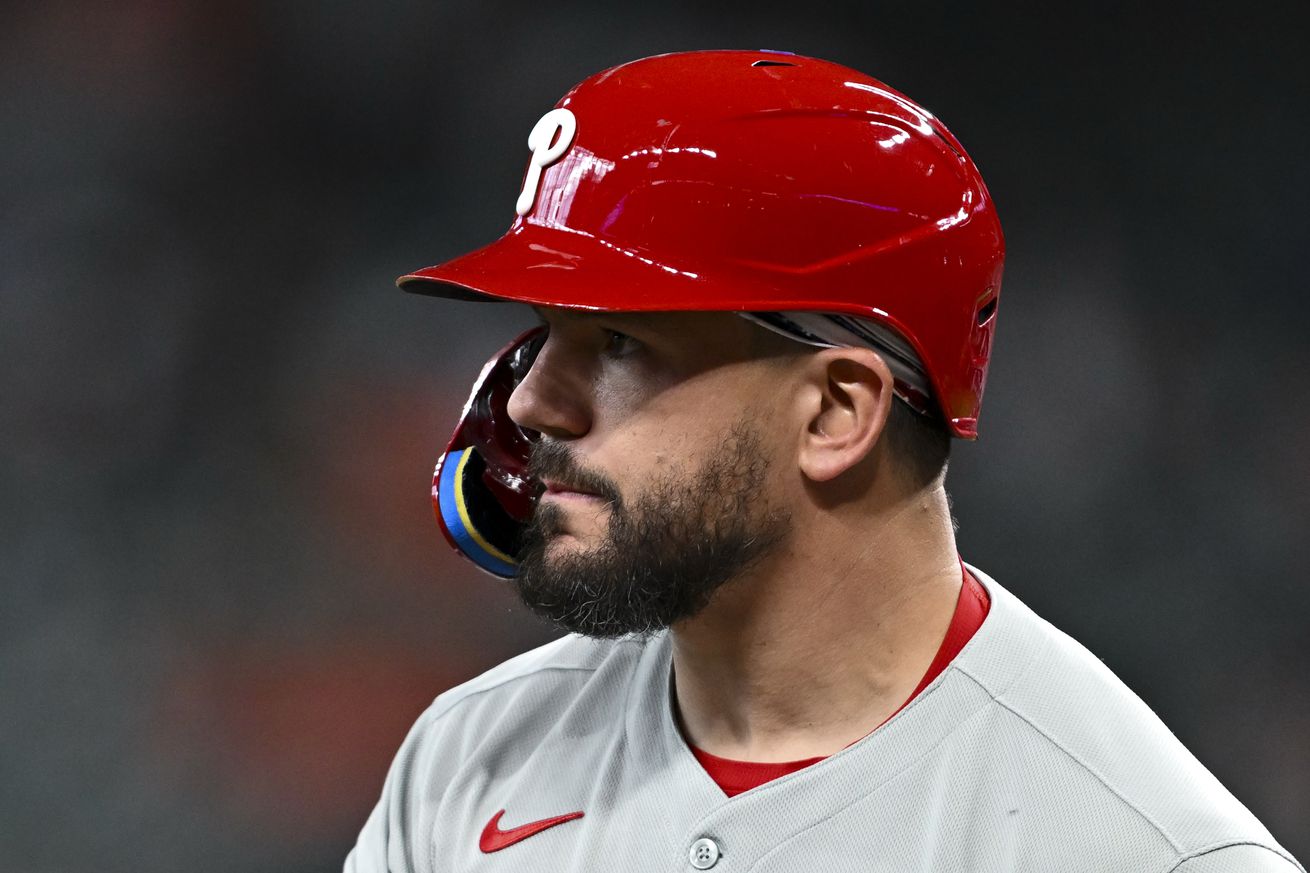
The Phillies noticeable dip against breaking pitches.
As of this writing, the Phillies have completed 80 games and are about to play their eighty-first game against Hunter Brown and the Houston Astros, the halfway mark of the 162-game regular season. As Steve Dangle would say, that’s so many games.
There are plenty of takeaways with this team. The starting pitching is fantastic, Kyle Schwarber has officially solidified himself as a difference-making designated hitter, the defense isn’t good, and the bullpen is an issue.
Those are about as general as you can get. They have been the talking points all season long.
Maybe the specific issue discussed today isn’t as glaring on the surface as the bullpen or defense, but it’s something they will have to answer over the next 81+ games remaining in 2025.
The Phillies are still a great fastball-hitting team with the best batting average and seventh-best slugging percentage against four-seam fastballs. It’s a Kevin Long staple to be on time for the fastball.
The problem is that today’s game features fewer four-seam fastballs than ever. Here is the rate of four-seam fastball usage since 2021:
- 2025: 31.6%
- 2024: 31.9%
- 2023: 32.1%
- 2022: 33.2%
- 2021: 35.2%
With that, breaking ball usage has gone up to 31% of the time. While the narrative of the Phillies’ offense over the last few seasons has been that breaking balls are their weakness because they are too swing-happy, they have performed very well compared to their 29 other counterparts.
In 2024, they hit .240 against breaking pitches and slugged .404. Those numbers may seem low but both ranked in the top five in baseball. Despite the narrative, the Phillies were a very good team against breaking balls.
The Phillies have not maintained the same success in 2025, however. They’re hitting .214 with a .338 slugging against breaking balls this season. Their average ranks 18th and their slugging percentage is fifth worst in baseball.
There are some glaring differences with some of their key hitters.
Here those differences in some notable Phillies hitters between 2024 and 2025 against breaking pitches (avg/slug in each year):
- Kyle Schwarber: .244/.500 in 2024. .144/.330 in 2025
- Bryce Harper: .225/.445 in 2024. .220/.363 in 2025
- JT Realmuto: .296/.500 in 2024. .185/.209 in 2025
- Alec Bohm: .306/.518 in 2024. .242/.295 in 2025
- Bryson Stott: .304/.457 in 2024. .231/.292 in 2025
- Max Kepler: .214/.418 in 2024. .167/.295 in 2025
Brandon Marsh has improved his batting average from .172 to .306 against breaking pitches but has a lower slugging percentage (.336 in 2024, .333 in 2025). Trea Turner has seen real growth and Nick Castellanos hasn’t taken a major step back.
Given that the roster is mostly full of the same players, it’s hard to figure out why so many Phillies hitters are significantly worse. Some of it could be aging for JT Realmuto’s case, or in Bryce Harper’s case, playing through pain like his wrist. What about the others?
The offensive approach overall has serious question marks. While it is clear they’ve at least attempted to make changes, the results have led to a mixed bag. Their wRC+ of 105 ranks 12th; they carry a chase rate of 29.1%, bottom ten in baseball, and they have seen numerous power saps. They rank 18th in doubles, 13th in triples, and 17th in home runs.
Theoretically, a less chase-happy offense might sacrifice power but could stay back on breaking pitches better and make more contact. Their strikeout rate has improved a hair but it still doesn’t seem like the juice has been worth the squeeze with this group.
The Phillies have a proven track record of successful hitters but given their October failures in 2023 and especially 2024, their breaking ball issues are becoming a real warning sign for the rest of this season. Do they have a counter in October?